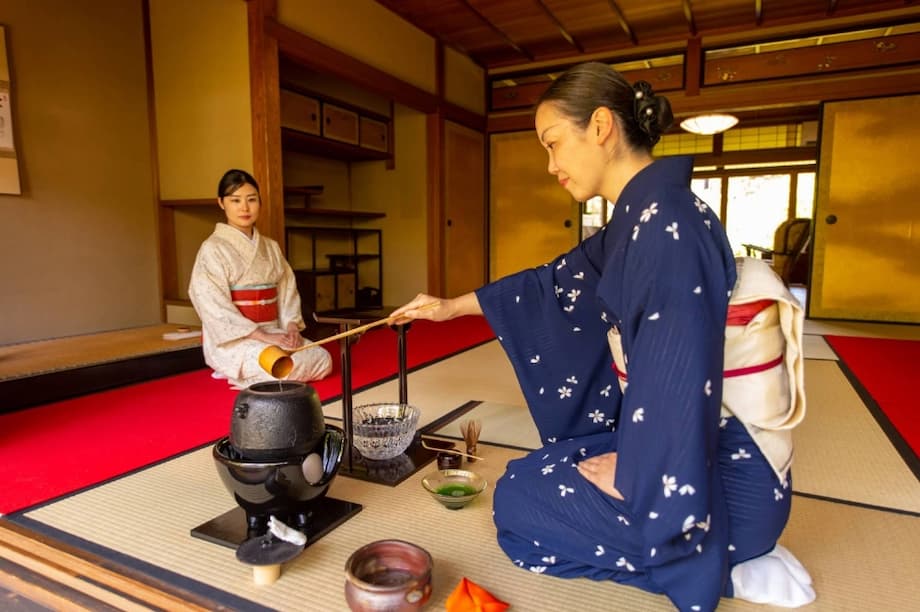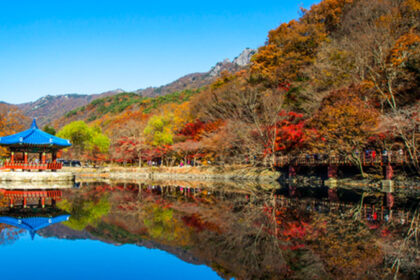A global craze meets a centuries old ritual
Matcha is having a moment that has turned into a movement. The vivid green powder is everywhere, from lattes and sparkling drinks to doughnuts and soft serve. Demand has surged far beyond Japan, driven by social media trends, tourism, and a wellness wave that prizes caffeine with calm. This rapid growth is colliding with the slow craft of making premium matcha, squeezing supplies and lifting prices in key markets.
- A global craze meets a centuries old ritual
- Why supplies are tight despite higher output
- Social media, tourism and tariffs turbocharge demand
- What the tea ceremony can teach new fans
- Quality over quantity
- Farmers, factories and the industry’s pivot
- Prices, rationing and the consumer experience
- Will the boom last and what it means for culture
- What to Know
That tension, while challenging for farmers and retailers, is creating an unexpected opening for one of Japan’s most refined cultural practices. The traditional tea ceremony, long centered on sharing a single bowl of matcha with intention and humility, is drawing fresh interest from visitors and newcomers who want to understand the drink at its source. Tea masters say the crush of demand can be a gateway to culture if paired with education and respect.
Japan has increased production of tencha, the leaf used for matcha, over the past decade. Yet many shops still sell out within hours, high grade tins are rationed to one per customer, and some tea ceremony venues report price increases near 30 percent as procurement costs climb. Climate pressure, an aging workforce, and a recent 15 percent tariff on Japanese goods entering the United States are magnifying the squeeze. In response, growers are investing in new capacity, the government is offering subsidies, and industry groups are urging mindful consumption so that premium matcha reaches its best uses.
For the tea ceremony community, the current moment brings both relief and responsibility. Interest in matcha is soaring. Interest in sado, the way of tea, has room to grow. Practitioners see a chance to connect curiosity about flavor with a deeper appreciation for craft, hospitality, and presence.
Why supplies are tight despite higher output
Japan has nearly tripled production of tencha since the early 2010s, and exports of green tea, including matcha, have climbed by about a quarter year over year. That growth is real. It has not been enough to satisfy a global thirst that blossomed almost overnight, especially for first harvest matcha prized by tea ceremony hosts.
From tencha to matcha, a slow craft
Premium matcha begins in the field with shade. For several weeks before harvest, growers drape tea shrubs to limit sunlight. This practice boosts chlorophyll and amino acids that produce the drink’s signature umami and gentle sweetness. Young leaves for tencha are picked in late spring, then steamed, dried, and de-stemmed. Only then are they ground into a fine powder, ideally on stone mills. A single mill can produce roughly 40 grams an hour. Good matcha is often rested until late autumn to round out flavor. None of these steps can be rushed without compromising quality.
Heat and labor strain the harvest
Recent heatwaves have battered crops in core regions like Kyoto, which yields a sizable share of Japan’s tencha. Hot weather damages tender leaves and narrows the window for optimal picking. The workforce is also shrinking as many farmers reach retirement age, and too few younger workers take their place. Growers are modernizing where possible, but specialized shade cultivation and careful processing still require skilled hands. These realities mean that when demand spikes, supply cannot instantly follow.
Social media, tourism and tariffs turbocharge demand
Social platforms have supercharged matcha’s rise. Viral recipe videos and influencer tasting notes turn new drink ideas into neighborhood cravings within days. Cafe owners report that volumes once considered monthly run rates now move in a week. Some shops request a kilogram a day to keep up. Tourists returning from Japan, where a weaker yen has encouraged travel, bring home tins and fresh expectations for taste and presentation.
Retailers in Uji and Kyoto, two cities synonymous with premium matcha, have imposed purchase limits to prevent hoarding. Ceremonial venues and specialty cafes are rationing servings or introducing daily caps. Trade policy has added another layer. A new 15 percent US import tariff on Japanese goods is lifting costs for importers, distributors, and consumers in America, which is a major buyer of matcha. Even modest surcharges ricochet through a supply chain already stretched by weather and labor constraints.
Industry groups are urging restraint and clarity. They advise cooks and baristas to use later harvest or lower grade powders for blended drinks and baking, reserving the most delicate lots for straight preparation with water. That guidance is practical and cultural. It spreads limited top grade supply further while giving newcomers a clearer path to taste matcha at its best.
What the tea ceremony can teach new fans
The tea ceremony distills matcha to its essence. A host prepares a bowl with measured movements, whisking powder and hot water to invite attention to sound, aroma, and taste. The ritual celebrates hospitality, gratitude, and equality of guests. It was refined in the sixteenth century and has influenced Japanese aesthetics ever since.
Keiko Kaneko, a tea ceremony instructor, describes the ceremony’s central lesson as a practice of presence.
‘The tea ceremony is reminding us to cherish every encounter as unique and unrepeatable,’ Kaneko said.
That spirit contrasts with a marketplace that can reward speed and spectacle. Yet practitioners see a rare chance to bridge the two. Rie Takeda, a tea master at a ceremony chain in Tokyo, welcomes the interest even as she monitors her shrinking stocks.
‘The demand is good,’ Takeda said through a translator. ‘It is a gateway for more people to know about Japanese culture.’
Atsuko Mori, who directs a tea ceremony venue in Kyoto that limits matcha purchases to one tin, has urged visitors to learn the difference between grades and uses.
‘It is a bit sad to see high grade matcha used in cooking, where its delicate flavor is often lost,’ Mori said. ‘Matcha is the highest grade of tea and it is so special to us.’
Quality over quantity
Much of the confusion in global markets stems from language. Western labels often split powders into ceremonial and culinary categories. In Japan, quality is evaluated by harvest timing, cultivar, color, aroma, and taste. First harvest lots with luminous color and deep umami are cherished for straight preparation. Later harvests tend to be more astringent, which can be ideal for mixing with milk or baking where stronger flavors need to shine through.
Experts and trade groups encourage matching powder to purpose. High grade matcha can lose nuance in sweet, cold, or heavily flavored drinks. Using lower grade for lattes and recipes conserves limited top tier leaves for practices like the tea ceremony. It also saves consumers money, since pricing has climbed as supplies tightened. Clear labeling and education help buyers avoid disappointment, and they protect the craft from being reduced to a catchall green flavoring.
There is also a risk of mislabeling. Soaring demand has drawn in new suppliers across the region, including China, South Korea, and Vietnam. Some products marketed as matcha are simply ground green tea powders that lack the shaded cultivation and careful processing that define Japanese matcha. Greater transparency on origin and methods gives consumers confidence and rewards producers who maintain high standards.
Farmers, factories and the industry’s pivot
Japan’s tea sector is racing to adapt. Several producers are adding factories and upgrading milling capacity. Cooperatives and companies are investing in shading infrastructure and quality control. Automation is helping address labor shortages in areas like sorting and packaging, while experienced growers focus on cultivation and leaf selection.
Public support is part of the response. Authorities have offered subsidies to improve matcha leaf quality and expand orchards. Outreach helps sencha growers switch fields to tencha production where it suits the terrain and climate. The goal is to raise capacity without eroding the standards that made Japanese matcha a benchmark in the first place.
Tomoyuki Kawai, who works in the agriculture ministry’s tea section, captured that balance plainly.
‘We do not want this to end up just a fad, but instead make matcha a standard as a flavor and a Japanese global brand,’ Kawai said.
Competition is sharpening. Neighboring countries are scaling up, which could ease prices for basic products while challenging Japan to defend its premium reputation. Many buyers say provenance and traceability are now decisive factors. Partnerships that invest in farms and tell the full story may separate serious brands from opportunistic seasonal offerings.
Prices, rationing and the consumer experience
Shops in Uji and Kyoto describe daily sellouts and one tin limits. Ceremony venues have raised drink prices by roughly 30 percent this year to cover cost jumps and longer lead times. Outside Japan, cafes that built menus around high grade Uji matcha have capped servings to stretch inventory across more customers. A well known cafe in Washington, DC limits premium servings to a handful each day, and weekend allotments vanish within the first hour.
Importers report longer waits between shipments, with orders that once arrived in days taking more than a week. Some Japanese companies have paused new wholesale accounts in their export programs. Shipping costs, tariffs, and insurance have all added friction. Consumers feel it directly in higher prices for pure matcha drinks, and indirectly in reformulated menus that rely more on blended or sparkling options.
Amid the squeeze, industry voices urge patience and perspective. Stockpiling premium tins for resale, or scooping rare lots into sugary snacks, narrows access for those who want to experience matcha as a drink. Spreading demand across grades, and savoring the best powders in simple preparations, helps stretch a limited harvest while protecting its character.
In Tokyo, tea master Rie Takeda summed up the moment as both a test and an opportunity. The boom is real. The choices that cafes, brands, and consumers make will decide whether it elevates understanding or reduces matcha to a passing lifestyle flavor.
Will the boom last and what it means for culture
Some industry leaders expect cooling, not collapse. As new fields come online and capacity expands, lower quality powders may settle back to more reasonable prices. A co founder of a large matcha cafe chain believes volumes will remain high while growth moderates in the next two to three years. That adjustment could reward quality and transparency instead of quick margins.
For practitioners and farmers, the stakes are cultural and economic. Matcha has moved from a niche category within Japan’s tea industry to a global staple for many Gen Z consumers. If the surge pulls more people into tea ceremony rooms, farms prosper and heritage survives. If it turns into a race to the bottom, small family growers and the traditions they anchor could be crowded out. The difference may hinge on whether brands invest in relationships and storytelling, and whether consumers learn to value freshness, origin, and preparation.
There are reasons for optimism. Coffee followed a similar path, beginning with flavored drinks before many drinkers discovered single origin brews and careful brewing methods. The same arc can lead matcha fans from colorful seasonal drops to quiet bowls of pure tea. As demand shapes the market, authenticity can become a competitive edge.
On the policy and production side, Japan is still expanding exports and modernizing. The global matcha market has been estimated in the low billions of dollars and is projected to grow at a steady pace through the decade. That opportunity is real if craft and capacity rise together. The tea ceremony offers a compass for that journey, reminding everyone that the smallest details matter, and that a shared bowl can still slow time.
What to Know
- Heatwaves, labor shortages, and slow stone milling constrain supply even as tencha output in Japan has climbed over the past decade.
- Retailers in Uji and Kyoto limit tins to one per customer, and some ceremony venues report price increases near 30 percent.
- Social media trends and tourism have accelerated demand, with some cafes requesting a kilogram of matcha a day.
- A recent 15 percent US tariff on Japanese goods adds cost pressure in a key import market.
- Experts advise using later harvest powders for lattes and baking to reserve top grade matcha for straight preparation with water.
- Japan is expanding capacity with new factories, automation, and government subsidies to improve quality and output.
- Competing producers in China, South Korea, and Vietnam are growing supply, raising authenticity and labeling concerns.
- Tea masters see a chance to spark interest in the tea ceremony, using the boom to connect flavor with tradition.












